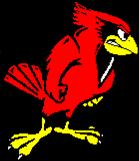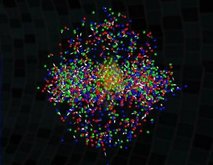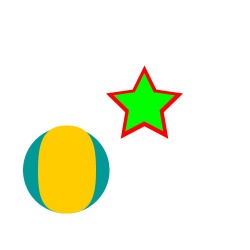Warm Colors
Cool colors
Intensity
Complementary
Colors wheel
Colors chart.
Personal statement!

My name is Hoang and I’m in AOIT. I’m 16 years old and I was born in Vietnam. I came here, San Diego, 2 years ago because my father has been living here for a long time and my parents wanted me to have a better education. Hoover high school was the first school that I attended to. And even though the students in this school are very friendly, I was really shy and I did not know much of English at all at that time, so it was pretty much difficult for me to make a conversation to anyone. Further more, I did not even know the way to my class at my first time in school and the rules in the school. It was hard for me.
I’m now a junior in Hoover High School and I always have good grades in my classes because I always pay attention to the teachers and do my jobs. I got into AOIT when one of my teachers introduced it to me and the advantages that I get from joining AOIT club (such as learning about technology, computers knowledge, web design). My favorite school activities are: field trips opportunities and I can use computers to type in class instead of writing. I am doing pretty well now in school. Most of the things that make up who I am today were the challenges that I faced. For example : the most challenges thing that have ever happen to me was to be a good student in this school and live in this kind of environment (different language, food, weather, …).
I am hoping to graduate high school and go to college. I think I m going to be a dentist however I m not really sure about whether I will work as a dentist for the rest of my life or not. So I’m trying to think about some jobs that I really love. In the next ten years I can see myself working as an ant because I want to work really hard and save up money to build a house(because I don’t have one now).
I’m now a junior in Hoover High School and I always have good grades in my classes because I always pay attention to the teachers and do my jobs. I got into AOIT when one of my teachers introduced it to me and the advantages that I get from joining AOIT club (such as learning about technology, computers knowledge, web design). My favorite school activities are: field trips opportunities and I can use computers to type in class instead of writing. I am doing pretty well now in school. Most of the things that make up who I am today were the challenges that I faced. For example : the most challenges thing that have ever happen to me was to be a good student in this school and live in this kind of environment (different language, food, weather, …).
I am hoping to graduate high school and go to college. I think I m going to be a dentist however I m not really sure about whether I will work as a dentist for the rest of my life or not. So I’m trying to think about some jobs that I really love. In the next ten years I can see myself working as an ant because I want to work really hard and save up money to build a house(because I don’t have one now).
Hottest temperature ever heads science to Big Bang

WASHINGTON (Reuters) – Scientists have created the hottest temperature ever in the lab -- 4 trillion degrees Celsius -- hot enough to break matter down into the kind of soup that existed microseconds after the birth of the universe.
They used a giant atom smasher at the U.S. Department of Energy's Brookhaven National Laboratory in New York to knock gold ions together to make the ultra-hot explosions -- which lasted only for milliseconds.
But that is enough to give physicists fodder for years of study that they hope will help them understand why and how the universe formed.
"That temperature is hot enough to melt protons and neutrons," Brookhaven's Steven Vigdor told a news conference at a meeting of the American Physical Society in Washington on Monday.
These particles make up atoms, but they are themselves made up of smaller components called quarks and gluons.
What the physicists are looking for are tiny irregularities that can explain why matter clumped out of the primeval hot soup.
They also hope to use their findings for more practical applications -- such as in the field of "spintronics" that aims to make smaller, faster and more powerful computing devices.
They used the Relativistic Heavy Ion Collider (RHIC, pronounced "rick"), a particle accelerator and collider that is 2.4 mile around and buried 12 feet underground in Upton, New York to collide gold ions billions of times.
"RHIC was designed to create matter at temperatures first encountered in the early universe," Vigdor said. They calculate the 4 trillion degree temperature gets pretty close.
"How hot is it?" he asked.
In comparison, "The predicted melting temperature of protons and neutrons is 2 trillion degrees. The temperatures at the core of a typical type-2 supernova is 2 billion degrees," he said.
The center of our sun is 50 million degrees, iron melts at 1,800 degrees and the average temperature of the universe is now 0.7 of a degree above absolute zero.
BIRTH OF MATTER
Vigdor's team believe they are looking at a recreation of the moment just before the quark-gluon soup condensed into hadrons -- the particles of matter that make up most of our universe.
Something happened in the milliseconds after the Big Bang to create an imbalance in favor of matter over anti-matter. If there had not been this disparity, matter and anti-matter would have simply reacted to create a universe of pure energy.
Later this year, physicists using the Large Hadron Collider in Switzerland hope to smash lead ions together to create even hotter temperatures that should replicate moments even earlier in the birth of the universe.
Brookhaven has also patented some potential commercial applications of the research, said theorist Dmitri Kharzeev.
"The goal here is to create a device that can operate not only on the current of an electric charge but also on the current of spin," Kharzeev told the news conference. Quarks spin in different directions and understanding how and why they do this can help scientists harness the power. It may be possible to replicate a symmetrical spin in graphene, for example, said Kharzeev. Graphene is a so-called nanomaterial that scientists believe may replace silicon in super-fast and super-small devices. "We are thinking of other practical applications as well," said Kharzeev. (Editing by Sandra Maler)
They used a giant atom smasher at the U.S. Department of Energy's Brookhaven National Laboratory in New York to knock gold ions together to make the ultra-hot explosions -- which lasted only for milliseconds.
But that is enough to give physicists fodder for years of study that they hope will help them understand why and how the universe formed.
"That temperature is hot enough to melt protons and neutrons," Brookhaven's Steven Vigdor told a news conference at a meeting of the American Physical Society in Washington on Monday.
These particles make up atoms, but they are themselves made up of smaller components called quarks and gluons.
What the physicists are looking for are tiny irregularities that can explain why matter clumped out of the primeval hot soup.
They also hope to use their findings for more practical applications -- such as in the field of "spintronics" that aims to make smaller, faster and more powerful computing devices.
They used the Relativistic Heavy Ion Collider (RHIC, pronounced "rick"), a particle accelerator and collider that is 2.4 mile around and buried 12 feet underground in Upton, New York to collide gold ions billions of times.
"RHIC was designed to create matter at temperatures first encountered in the early universe," Vigdor said. They calculate the 4 trillion degree temperature gets pretty close.
"How hot is it?" he asked.
In comparison, "The predicted melting temperature of protons and neutrons is 2 trillion degrees. The temperatures at the core of a typical type-2 supernova is 2 billion degrees," he said.
The center of our sun is 50 million degrees, iron melts at 1,800 degrees and the average temperature of the universe is now 0.7 of a degree above absolute zero.
BIRTH OF MATTER
Vigdor's team believe they are looking at a recreation of the moment just before the quark-gluon soup condensed into hadrons -- the particles of matter that make up most of our universe.
Something happened in the milliseconds after the Big Bang to create an imbalance in favor of matter over anti-matter. If there had not been this disparity, matter and anti-matter would have simply reacted to create a universe of pure energy.
Later this year, physicists using the Large Hadron Collider in Switzerland hope to smash lead ions together to create even hotter temperatures that should replicate moments even earlier in the birth of the universe.
Brookhaven has also patented some potential commercial applications of the research, said theorist Dmitri Kharzeev.
"The goal here is to create a device that can operate not only on the current of an electric charge but also on the current of spin," Kharzeev told the news conference. Quarks spin in different directions and understanding how and why they do this can help scientists harness the power. It may be possible to replicate a symmetrical spin in graphene, for example, said Kharzeev. Graphene is a so-called nanomaterial that scientists believe may replace silicon in super-fast and super-small devices. "We are thinking of other practical applications as well," said Kharzeev. (Editing by Sandra Maler)







